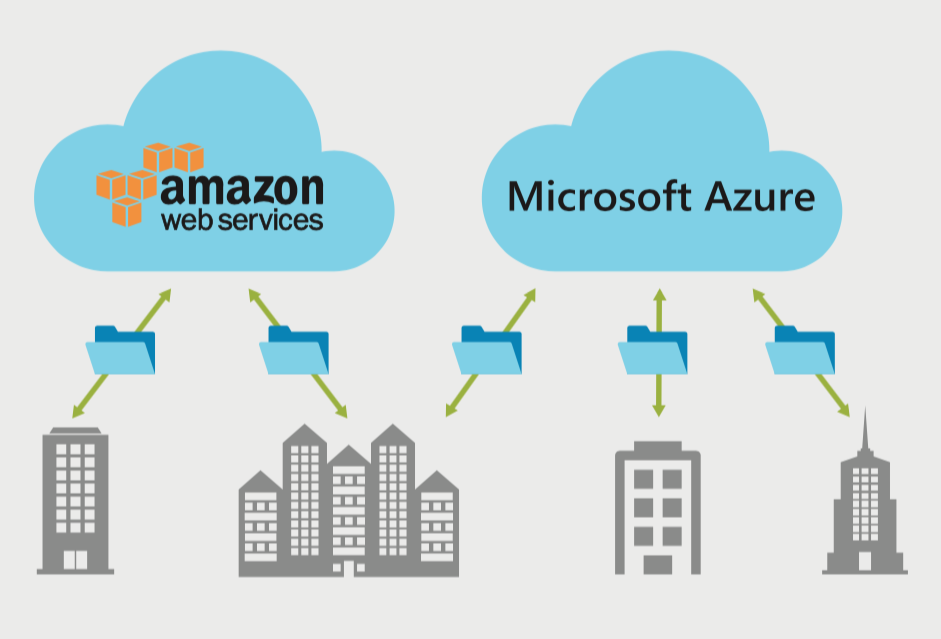Helping Enterprise IT Move Big Data Sets To and From the Cloud
The cloud revolution is transforming IT, creating a seemingly endless stream of technologies, products, and even entirely new industries that leverage the many benefits of the cloud. With technologically advanced compute and storage offerings forming the core of the cloud value proposition, it is ironic that a fundamental technical limitation often stands in the way of harnessing all that power: moving data into and out of the cloud in a fast, reliable, secure manner is an ongoing challenge.
Powerful new options for IT infrastructures
Today’s proliferation of IaaS, PaaS and SaaS offerings makes it easy to forget how unimaginable ‘the cloud’ was even ten years ago. On the infrastructure side, cloud computing and object storage have enabled a radical rethinking of how data-heavy computing tasks and storage requirements are managed. By providing convenient, on-demand access to configurable pools of shared resources, public cloud providers have created powerful new options for IT infrastructure.
Businesses are able to take advantage of the cloud to reduce their upfront IT capital costs by building on-premises storage and compute capacity for steady-state utilization levels, with over flow to elastic cloud resources for peak demand. And increasingly, entire business processes and applications are being moved wholesale to the cloud.
However, applications that produce very large files — video, satellite images, big data analytics, medical images, clinical trial data, genome sequencing, etc — cannot take advantage of the power of the cloud if enterprises are unable to efficiently get data into the cloud.
Sometimes buying more bandwidth improves the situation, but that isn’t the whole story — latency and packet loss come into play with long-distance connections. The Internet Protocol (IP) networks that connect enterprises to the cloud aren’t being used optimally for moving large data sets over long distances, so there is a significant bottleneck in the rapidly evolving global cloud ecosystem.
Companies looked to Signiant to solve the bottleneck problem
As cloud technology emerged and IT professionals familiarized themselves with it, their enthusiasm was often tempered by the realization that writing to cloud storage via HTTP(S) can be very slow. Many were familiar with how Signiant solved the network bottleneck problem for file transfer between data centers, and looked to the company for a solution to this new and related challenge. The widespread adoption of cloud offerings is what created the demand for Signiant to develop Flight.
Signiant Flight meets the challenge of any entity needing to rapidly and securely transfer large data sets to and from cloud storage. Flight incorporates the speed, security and reliability of Signiant’s industry-leading intelligent file movement technology, which moves files up to 200 times faster than standard IP transfers.
Integrating with Cloud Object Storage and building a turnkey SaaS offering
The first step in solving the cloud upload problem is to integrate acceleration technology with the object storage interfaces of various public cloud platforms. Signiant did this work and could have stopped there — as its competitors did.
But the company had been innovating in another cloud dimension with its revolutionary Media Shuttle product, the control functions for which are delivered via a cloud-native, multi-tenant SaaS. With experience building and operating a successful SaaS, and a conviction that a cloud upload solution should take full advantage of cloud technology, Signiant decided to develop Flight as a turnkey SaaS offering.
The Flight offering is currently available for Amazon S3 and Microsoft Azure Blob storage, and other public cloud platforms (Google, Oracle, Verizon, etc ) will be added as customer demand builds for their services. One of the key benefits of Flight’s SaaS implementation is that it allows customers to use either cloud platform, or both, with no switching cost.
Use one or more cloud platforms with no switching costs

Because Signiant is handling the control functions and server-side infrastructure, and the client-side software is cloud-connected, (learn more about these two SaaS elements) customers can change storage providers simply by providing credentials for a new cloud storage account.
The software deployment model best suited for the enterprise
The enormous benefits of SaaS solutions are now well established within the enterprise IT community. By employing PaaS tools and the global reach of pubic cloud platforms, software companies like Signiant can develop and operate scalable platforms on behalf of their customers.
These solutions enable enterprises to get their business-critical applications up and running far faster, with a greatly reduced technology maintenance burden — allowing IT professionals to instead focus on core business differentiation and growth tasks. True cloud-native SaaS solutions also offer on-demand scaling, making it possible to rapidly adapt resources to unpredictable and changing business needs.
These advantages, combined with an opex rather than capex investment model, make SaaS the software deployment model of choice in most enterprises.


